Coding for Kids: The Future Coding Trends in 2025 | Codeyoung
Coding for Kids: The Future Coding Trends in 2025 | Codeyoung
Introduction:
Coding is becoming a must-have skill for kids and teens to navigate the ever-changing digital world. As of 2023, new trends in coding education for kids are emerging. The world has finally realized that kids need to learn programming and be introduced to coding at an early age. A coding education platform can serve as an excellent resource to teach children programming in a structured manner.
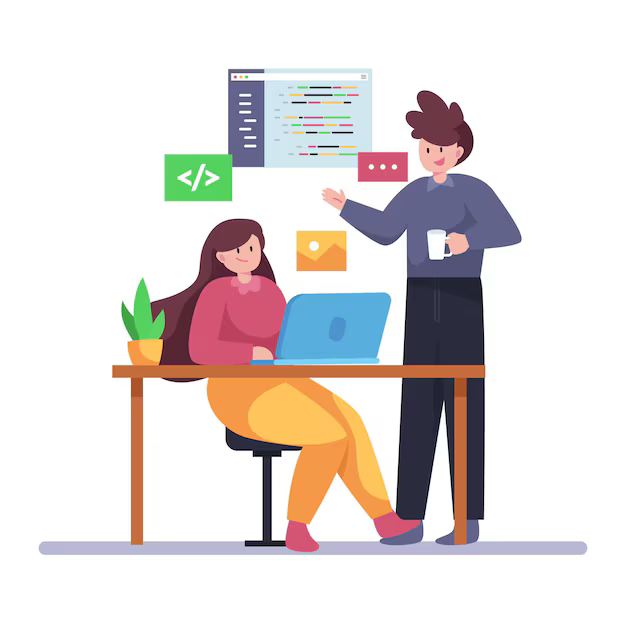
Additionally, combining programming skills with other essential life lessons, such as teaching children money skills and promoting financial education for kids, can prepare them for a holistic and successful future. “Coding for kids” and “programming for kids” are the keys to a brighter future.
These developments make learning to code more fun and accessible and get young minds ready for what’s to come. Coding for kids is the doorway to computer science. By staying ahead of coding trends, children are better prepared for the future of education and the evolving demands of the digital world.
The coding languages gives youngsters the skills to shape their own destiny in a world where technology is taking over.
coding camps are available online so kids can learn to code from home. This means individualized learning experiences that adapts to the speed and interest of each learner. Online coding courses for kids is the bridge that connects young minds to the digital age.
In this blog article, we’ll look at some of the most popular coding trends and examine how Codeyoung supports and empowers young students as they learn to code.
Gamification with Coding Skills
Gamification is a proven way to motivate and engage young students in their learning. Coding education benefits significantly from gamification helps kids learn coding basics by making it fun and interactive. Coding education platforms are using this more and more to make programming fun.

Kids can expect coding tutorials and courses in 2023 to have game like features including levels, achievements and rewards. These platforms allow kids to accept challenges, develop problem solving skills and persevere through coding assignments by making coding classes more fun and interesting.
Online STEM courses and classes for kids is a big hit, kids can now explore the world of science and technology from the comfort of their homes.
Computer science for Future Generations
Coding is very useful and helpful as it develops skills and problem-solving abilities. It breaks down big problems into smaller ones, which are easier to handle, so learners who learn to code can see how to find solutions to each part. Coding trends show that learning these skills prepares students for the future of education, where computational thinking plays a key role.

This kind of analysis helps programmers develop computational, logical, and critical thinking. As a result, children can also reason critically and think rationally, like they do when playing chess. Following the code for future approach, students gain essential skills to excel in technology-driven fields.
This kind of thinking not only helps programmers in computational and logical thinking but also critical thinking.
Future Job Market - Code For Future
Another important consideration is one's future career. There is an increasing demand for technological specialists across North America, and this trend is anticipated to continue. As a result, children who have learned to code through a coding education platform will have already begun to adjust to the high-demand environment in which they will likely live.

Additional skillset
Coding education also encourages collaboration, support, and teamwork. Many computer science projects require students to work as a team, which allows them to develop their communication, learning style, and group work skills. Additionally, staying updated with coding trends helps students adapt to the ever-changing demands of the tech industry, preparing them to contribute to future of education and the code for future. These skills ensure that students remain competitive in an increasingly digital world.

The Evolution of Coding Classes
Previously, learning to code was restricted to pupils enrolled in specific computer science courses given in high school.
This approach viewed programming as a specialized subject rather than a necessary talent in the digital age.
However, there has been a substantial change in recent years. Now that the relevance of programming abilities is generally recognized, coding languages are being integrated into the curriculum at a much younger age.
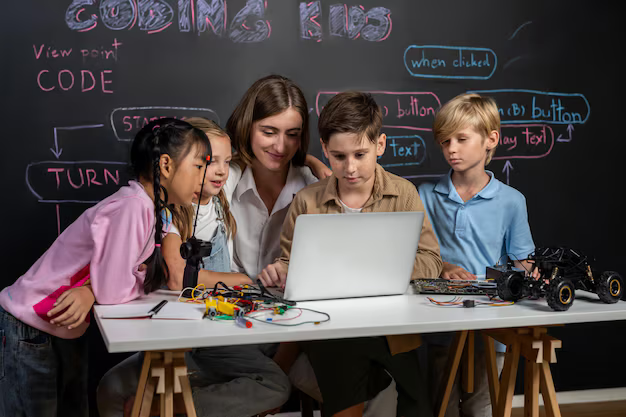
Engaging curriculum
One of the major developments has been the creation of block-based programming environments such as Scratch and Blockly. Using visual blocks to create web applications allows children to focus on improving their debugging and critical thinking skills, aligning with coding trends that emphasise accessibility for beginners. These platforms are shaping the future of education by introducing coding in an engaging and approachable way. Moreover, they lay the groundwork for kids to learn advanced concepts, fostering skills crucial to the code for future initiatives.
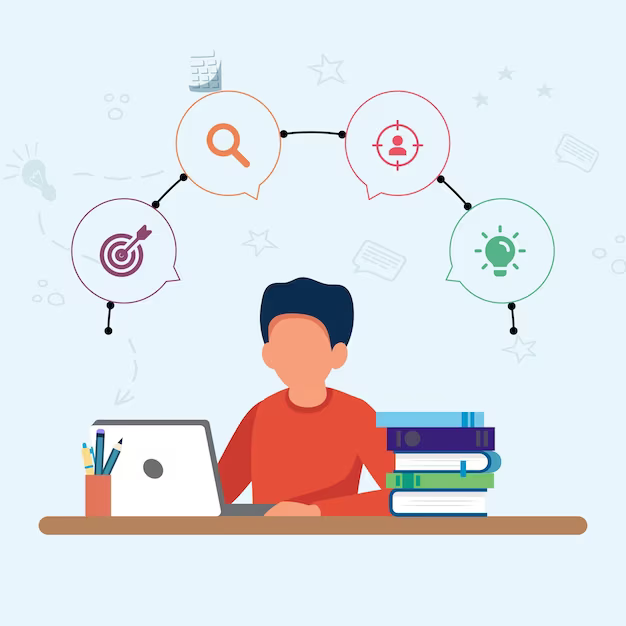
Educational camps
The evolution of coding teaching is also influenced greatly by the presence of coding camps, while also looking beyond classroom confines to using other programming languages and programs such as Javascript, C++, or even HTML 5 aside form what they usually learn at school In so doing, it becomes easier for them to internalize such ideas.

AR and VR for Programming Languages
Comprehensive coding curriculum courses will incorporate AI and ML components by 2023 to introduce young learners to the interesting realm of intelligent systems, coding platforms, and app development tools. Advanced courses will include AR and VR technologies. Kids may now play with developing chatbots, learning basic machine learning models, and developing games.

Benefits Of Technology In Curriculum
The incorporation of AR and VR technology into children’s coding courses across Canada will increase in 2023, enabling young students to explore and produce interactive 3D experiences. Coding education platforms are playing a significant role in introducing these technologies, allowing children to build websites and utilize tools that enhance their creativity, spatial awareness, and problem-solving abilities. By integrating AR and VR into coding education, kids can learn various programming languages effectively, further developing their analytical and critical thinking skills.
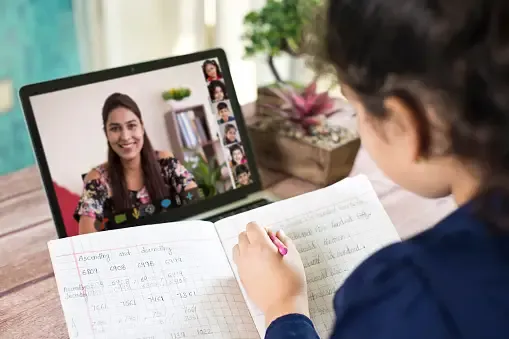
Improvement in coding expertise
It is projected that AR and VR technologies will take on wider role in education as they make progress while moving forward. Not only does the use of these technologies in coding make studying more interesting, but also they enable learners to become prepared for cutting-edge careers in technology.
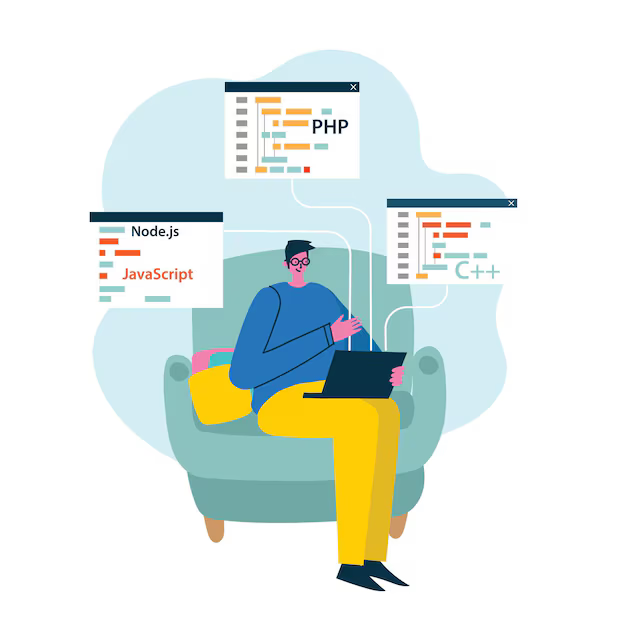
Makes learning more practical
Artificial reality and virtual reality have the ability to create scenarios where students are capable to picture the reactions their code will have as they write it next class or after first class. This real-time response would help reinforce comprehension which goes a long way towards makes tuition purposeful as well.

Cybersecurity And Ethical Coding
Coding education plays a crucial role in equipping students with the knowledge to develop secure and ethical software solutions. Many coding education platforms now emphasize cybersecurity principles, ensuring young coders understand the importance of protecting data and creating trustworthy applications.
The necessity of ethics
In 2023, kids’ coding classes and school courses will emphasise responsible coding ethics and safe online behaviour more. Children will learn about online safety precautions, data privacy, and technology ethics. By imparting these values early on, young programmers may contribute to creating a safer and more inclusive digital world. These initiatives align with current coding trends that shape how technology is taught to the younger generation.

These coding language trends for youngsters 2023 are the largest stepping stones, offers a glimpse into what delightful to experience in advance. Gamification, physical computer science would encourage kids to step into the shoes of a budding innovative and problem solver for the future next generation, while stringing along AR/VR.
Securing Digital Systems
We need to educate our students in Cybersecurity as they learn how digital systems educational resources can be protected from unauthorized access or attack, and that is where the effective cyber security education comes into play.
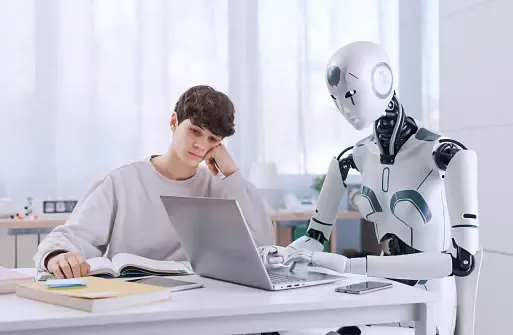
Advocating for Responsible Tech usage
However, on the other hand, it incorporates ethical considerations right into code education; so that students start code and think of Ethics when they make coding decisions with its possible impact on human and society.

When Should kids Learn to Code?
Benefits of Starting to Code Early
Numerous cognitive and educational benefits are provided when children learn coding basics when they are still young.
It helps them develop their problem-solving abilities and critical thinking since they are growing up dealing with coding at an early age.
Basic skill acquisition enable them break down complex problems into smaller parts that can be managed easily one by one.
This makes such individuals proper mathematicians too since solving mathematical questions involves similar processes as programming tasks do which require simpler approaches or steps.
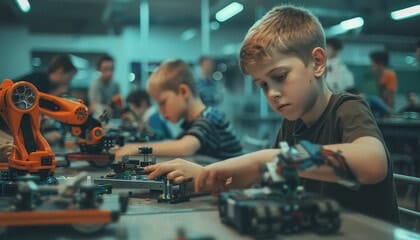
Build a Strong Foundation
Kids who start coding early in childhood deeply understand math and computational thinking. Coding trends often highlight the early introduction of programming to nurture logical thinking and creativity. To achieve this, they require activities to build games suitable for their ages to master basic coding concepts and ideas of sequences, looping, and branching. Preparing kids with these skills equips them to excel in the code for future, ensuring they can adapt to rapidly evolving technological landscapes.

Smart Kids with a Complete Coding Curriculum
The rise of coding for kids as an essential skill is especially important during a digital age to provide them with the fundamentals valuable skills and problem-solving experience they need in order to thrive within our tech-heavy society.
Customized curriculum
One important trend in children’s computer programming education has been shifting away from a one-size-fits all curriculum towards customizable lessons that adapt how each individual student learns best. For instance, personalized training programs includes the use of several computer programming languages such as Python or javaScript.

Personalized Learning Paths
Personalization is one of the major trends in kids code education. Since these students are at different levels of a past coding experience and learn to code at diverse paces, teachers have begun adopting customized ways to instruct students how to code.
Engagement through Gamification
One more rising trend in coding education is to boost engagement and motivation by gamification. Stem educators makes learning more infotainment by adopting game-like features in virtual classroom or offline coding class and uses platforms such as Scratch and Code.org
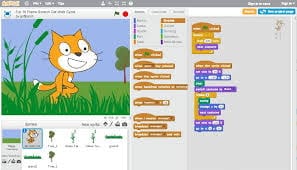
Improved Availability through Digital Channels
Learning how to code has become convenient due to digital platforms and online classes. Nowadays, block-based coding is done by all children, regardless of their location on the globe, while at home.
A well-known platform called Codeyoung is leading these trends and evolving how kids learn to code.
In coding education, project-based learning has significantly gained popularity and will continue to be a major trend in 2023. In recognition of the value of project-based learning, Codeyoung provides a variety of coding classes and programs that emphasize creating projects from scratch.
Collaboration : These techniques are successful in improving program results. In response to this trend, It incorporates teamwork components into its coding courses. Children can participate in coding competitions, work on group projects, and interact with other young coders.
Coding For Kids - Conclusion:
This utilizes cross-disciplinary integration wherein combines the various coding language skills, into topics other than the traditional programming language by Codeyoung. The use of different coding languages used to enrich the experience for a child. Gone are the days where Coding classes for children is considered only within STEM education, what actually makes it more practical towards solving real-life problems.
It is of course not easy to foster a love of coding in children, they need circumstances that are friendly and interesting for them. Codeyoung is well-aware of this facet and up their sleeves to make the learning interesting yet fun. Kids and teens will see a meridian, projects and placement test for interactive coding on the web that is designed to be fun.
Top 5 Coding Trends for Kids in 2024
Coding through Play - to hell with boring lectures Gamification is king in 2024. Traditional classroom instruction is being replaced by coding platforms that enable the use of game mechanics, quests, and challenges to make learning seem like play. so, they are proficient coders.
AI-powered Learning - You guessed it, a coding tutor geared to adapt with your child's pace, knowledge and learning approach. And that is the beauty of AI-based learning. Such programs use artificial intelligence to tackle child's progress and tailor learning.
March of VR - Currently Coding education moves into virtual reality VR for the much immersive and interactive learning part. kids creates programs and then actually watch what they've built and then get introduced to the virtual world.
Coding more than the Basics: Introduction to Tech Coding is no longer all about writing lines of...medium.com Coding programs are teaching kids how to use the latest technologies such as machine learning and robotics, in 2024. It gives them vision for the future and enables them to build truly innovative projects.
Coding for Good : Coding is about more than just creating cool games—it's a way of using new skills to make positive change. It seems that pretty much every coding program now encourages or requires kids to hack on something of social good value.
Top 5 Coding Platforms for Kids
Coding education has become an essential part of a child's learning journey, equipping them with skills for the future. A reliable coding education platform can make learning fun and interactive, helping kids build a strong foundation in programming.
Codeyoung: Codeyoung offers a very detailed curriculum that combines coding with necessary life skills like math, public speaking. The interactive platform lets kids build games and animations, while the progress-tracking tool keeps you in touch with their learning.
Scratch is a free platform developed by MIT, which makes use of colorful blocks to help kids learn the basics principles behind coding. Thanks to the wealth of creations that many people have shared online, fun and collaboration is augmented with Scratch by just exploring a lot.
Code. org: it's is an interactive way to learn how to code. Since its often use characters from as popular movies and games which turns learning to code into an adventure.
Tynker uses a puzzle based approach for teaching coding concepts. So, with the help of this app kids will drag and drop blocks to play games & build animations while learning how programming can solve problems.
With Roblox Studio, Kids create virtual worlds and characters in the Kids can also open three years, to make their own game using it with little programming effort.
Coding For Kids - FAQ's
What age should a child start coding?
There is no correct age. Interactive story-based games and hands-on coding activities teach basic concepts, even to kids ages as young as ages 5. But for ages 7 and up, I would recommend something a little more structured with languages like Scratch.
How do I start coding for my child?
Uncover What Your Child Loves Do they like games? How about cartoons or robot? Look for programming websites or games that align with those interests. So your child will enjoy reading and studying even more, making it a lot of fun for them.
Fundamentals: Younger kids (under 8) should use block based coding website/systems to get started. These are a few coding platforms, where they operate on drag-and-drop blocks to explain important things like sequencing & loops in an graphical method which is more appropriate for this age.
Change Platforms: When your child reaches a certain age, introduce him to different platforms of learning step by step.
Help Them Out: Answer all their queries and inform them how to deal with an issue if it arises. Though, if you do the above and then dump everything there really is a sure fire way that they will not help. Be a leader not an answerer.
Engagement with coding Community: There are many online platforms where one can ask the community whether it is sharing their work, asking for feedback or seeking help.
What is the best coding program for kids?
The best program is not one specific program. It depends of child's learning, age and interest. Scratch is for beginners, others like Block or Python should come later. Do Your Research and Have Them Try Out Different Programs.
What is an example of coding for kids?
for example, making an game in which your child is able to code a character that moves on the screen and collect certain objects or avoid hazards. For camera motion and character actions to react, codes are used to modulate them.
Which is the best coding course for kids?
You can find a bunch of coding courses for kids on the internet or at your local place. When choosing an online course, consider your child's age and previous coding experience level as well as their interests when possible, budget and the course structure (self-paced courses are different from instructor-led).
What is the best program to teach kids to code?
In many respects, there is no one-size-fits-all "best" program for teaching young coders because it depends on the interests essential skills of the programmed and their age. So, allow your child to take a chance on different platforms and paved the way for something that interests him/her. Pick a programme programming language that matches with the tastes of this prospective person.
Are coding classes for kids worth it?
This is true in a sense, because coding classes are well worth the investment! It gives them a great introduction to structured learning, offers a positive experience with instructor guidance and a support team and builds a community of young coders that children can relate with.
What is the best online program to learn coding?
While no one specific online program is the "best," find what fits you using these tips:
Define your goals: Why do you want to code? Web development? Data science? Various set of programs serve different areas.
Consider Your Learning StyleDo you like interactive exercises, video lectures or a mix of both? The learning modes of platforms differ
What course is best for coding?
This varies depending on prior experience, what you are looking for and how would you like to learn. Explore the alternatives, and pursuit for recognized courses that suit your end goal well Go through reviews to ensure you lay hands on a course which has earned some good name.
Can I become a coder in 3 months?
It is written in various places that one could catch the basics of coding within 3 months, and have learn how to code intensively. Some factors such as the type of programming languages, project, complexity and prior coding experience may affect the progress reports this time.
Can a 14 year old start coding?
Yes, definitely! These are reasons why this is more than enough time to start coding:
They have a good foundation: Most children in this age group already know some basic mathematical concepts such as logical thinking and algorithms, which are very important for coding.
Cognitive Development: Teens are at an age where these budding critical thinking and problem-solving skills will grow exponentially, with a little direction into the world of coding!
Curiosity and Discovery: A great time for them to get into what brings curiosity in their lives, where they can explore programming aligned with your interests.
What is the meaning of STEM education?
The acronym STEM means Science, Technology, Engineering and Math. STEM education is school that incorporates these four subjects into one cohesive lab or class. It is of course not a school that teaches each subject as if they are separate from one another.
Comments
Your comment has been submitted